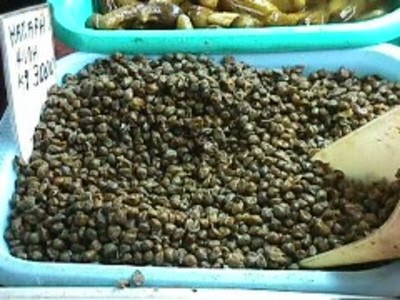Caper
David from Traverse City
asked about the word caper. Specifically, he wondered about the connection
between the caper that you eat and the caper that involves jumping or skipping
about. The short answer is that there is no connection between them.
The capers that we
eat—the pea-shaped green food items—are actually flower buds plucked from a
particular kind of bush. They are dried and brined, then packed in the glass
jars that we find on supermarket shelves. The word came from a Latin word that
meant a bush.
The motion caper refers
to a frolicsome leap, and it is sometimes used to describe a dance step. (“To
cut a caper” is connected.) It is an abbreviation of the word capriole. In
turn, that came from a Latin word that meant a goat, which is wont to frisk, especially
when young.
Another caper, now
obsolete, meant a pirate. It evolved from a Frisian verb that meant to take away, steal, rob, and plunder.
A fourth caper came from
the Gaelic language. It meant a piece of oatcake and butter topped by a slice
of cheese.
For a brief time in the
19th century, caper was a slang term that referred to chorister boys
and ballet girls. And in the early 20th century, caper was used as a
shortened form of capercailye, a wood grouse.
Available from McFarland & Co.: Word Parts Dictionary, 2nd edition
Nook edition
Nook edition
Check out Mike's other books here:
Listen to Mike’s program in real
time every Tuesday morning, 9:10 - 10:00 a.m. EST, by going to wtcmradio.com
and clicking on Listen Now. You’ll
also find about a month’s worth of podcasts there under The Ron Jolly Show.



Comments